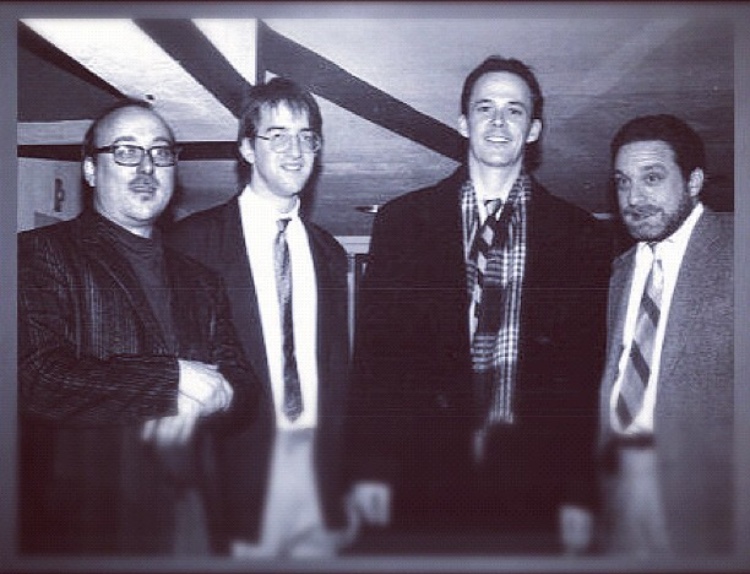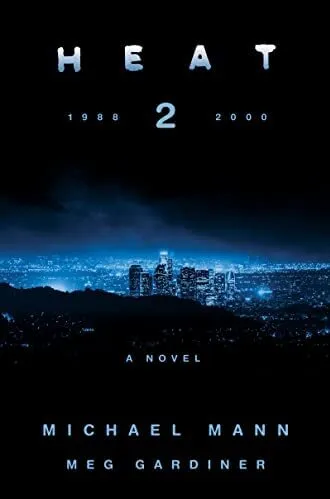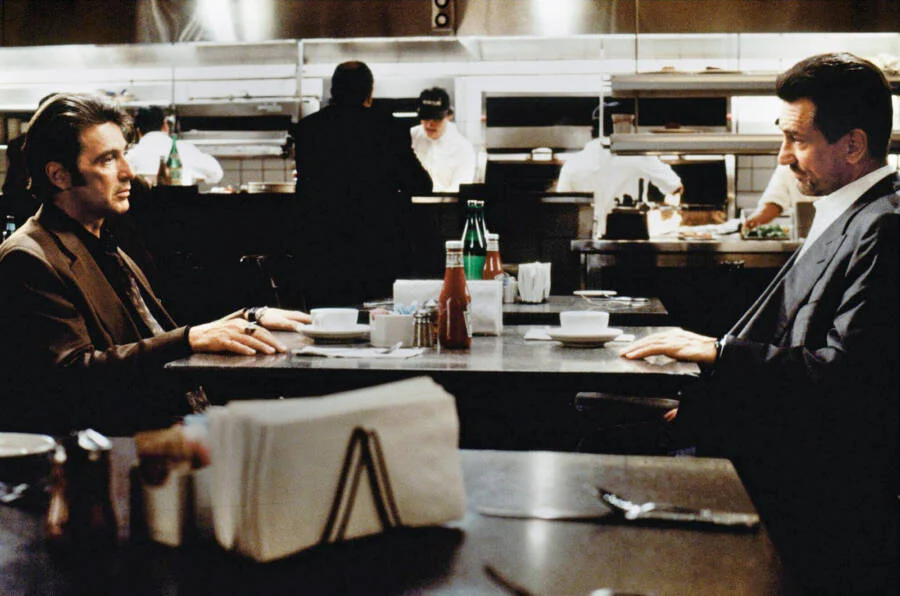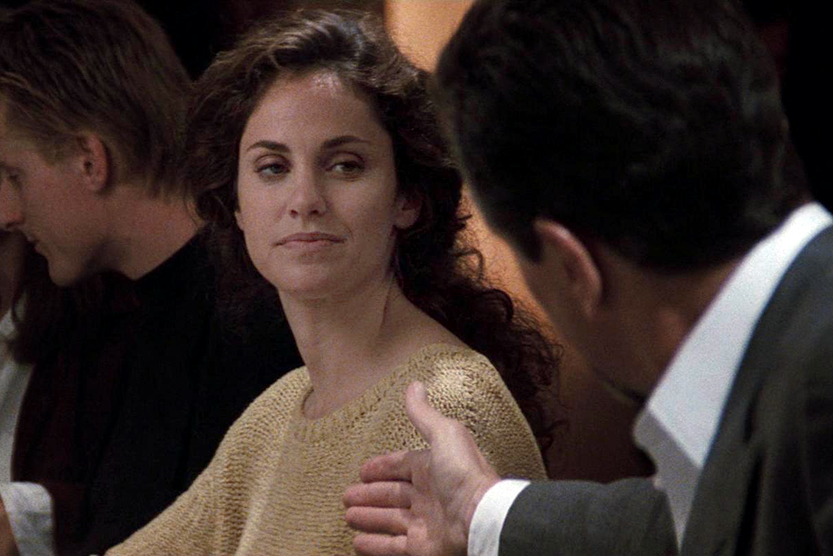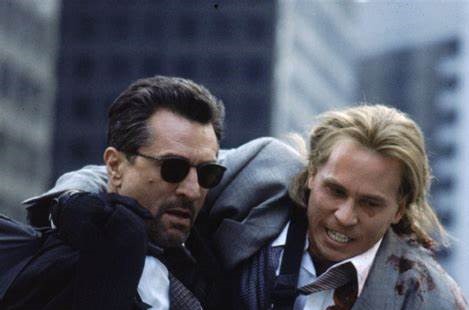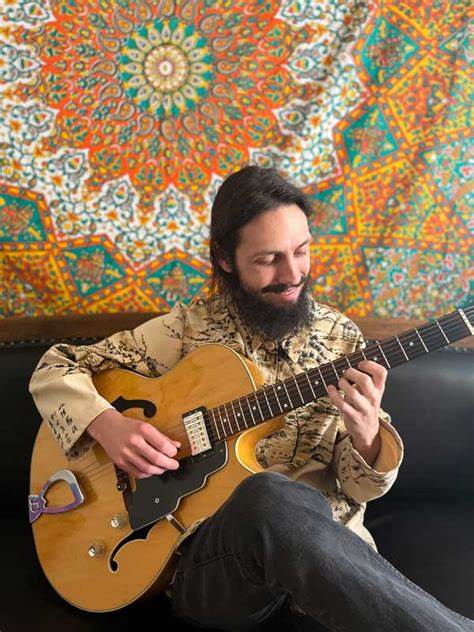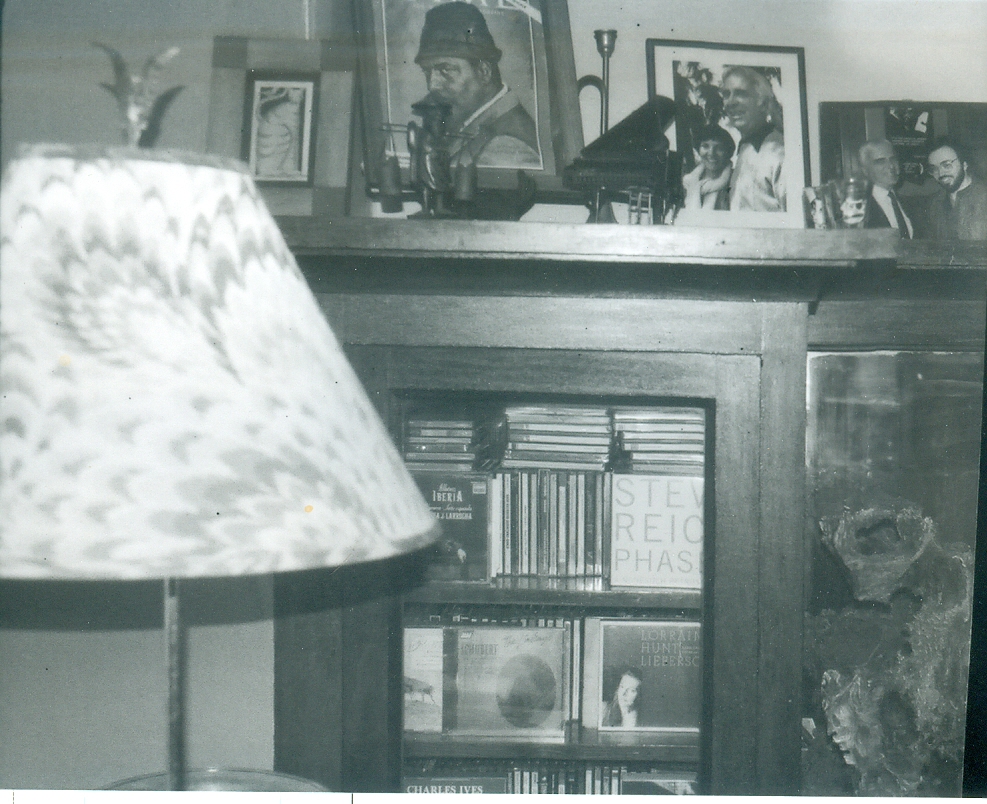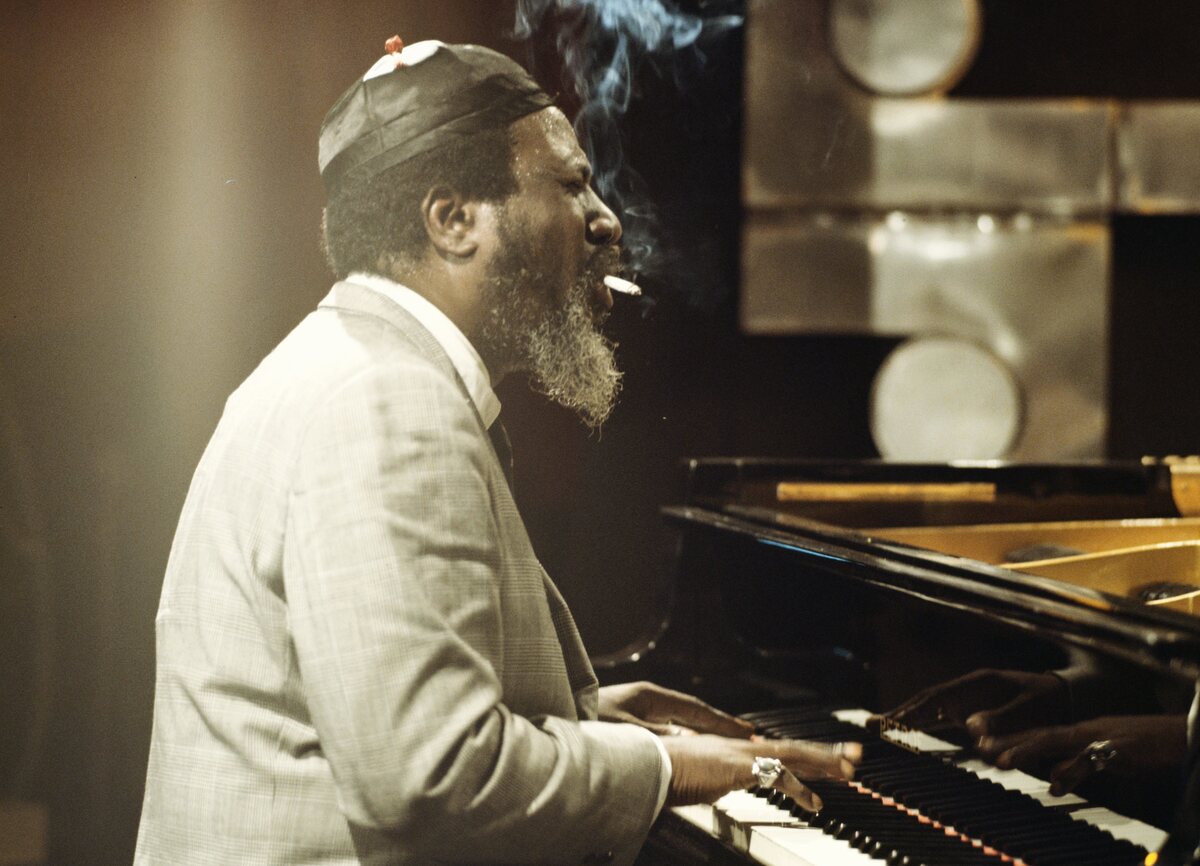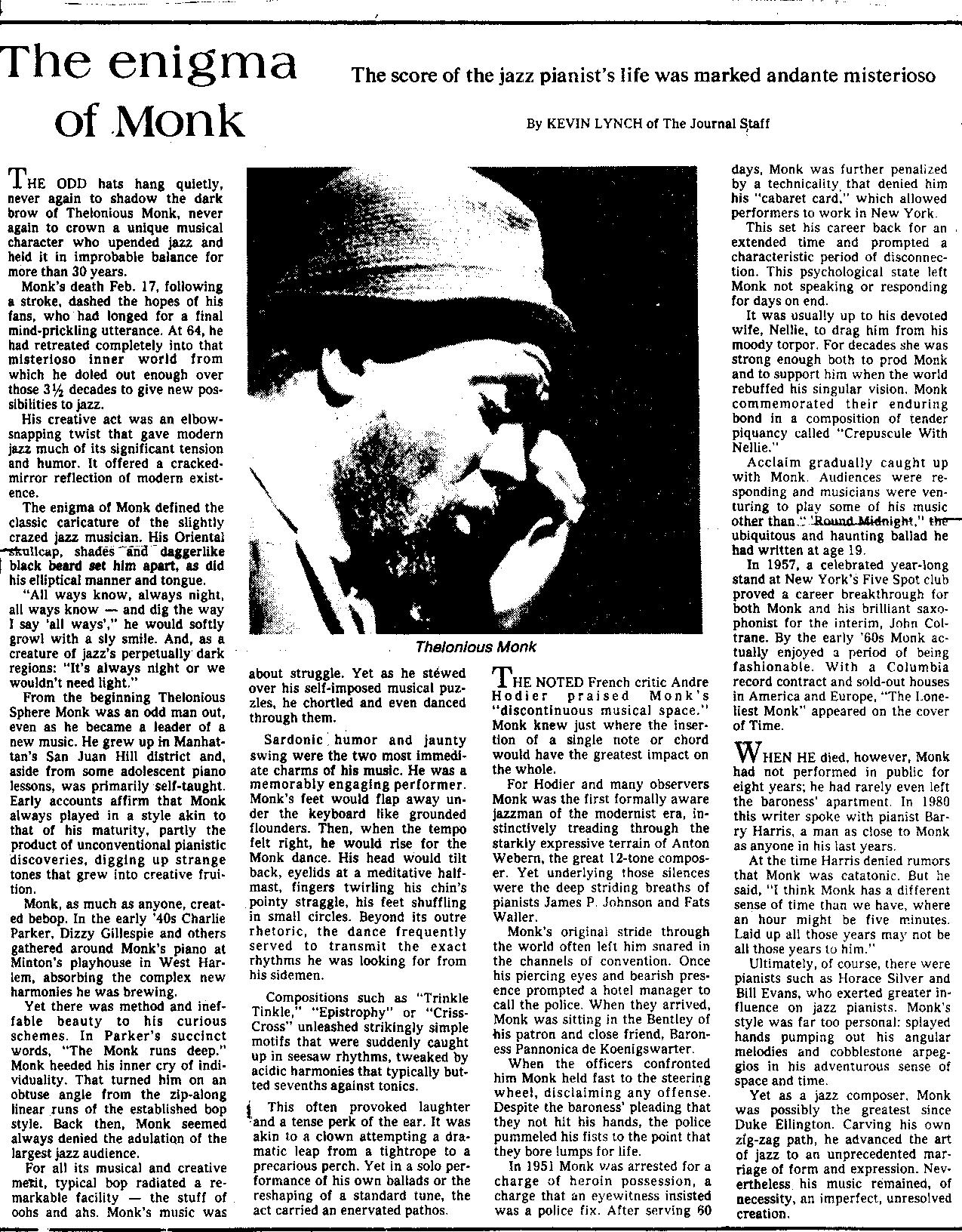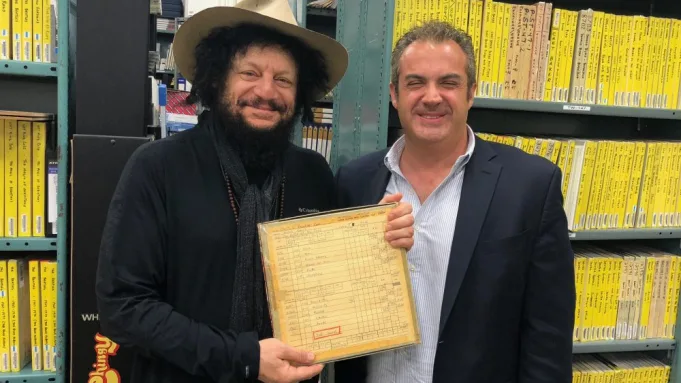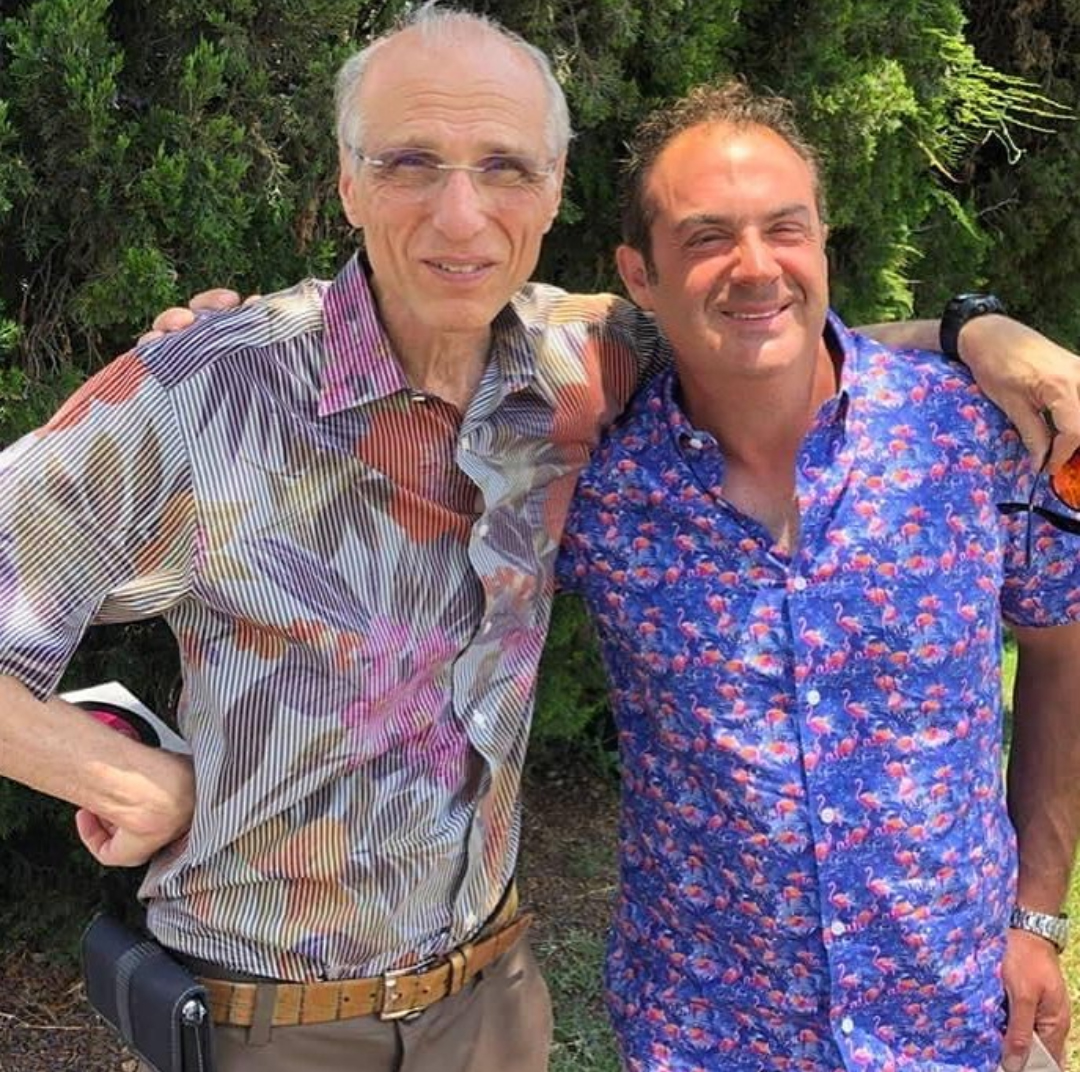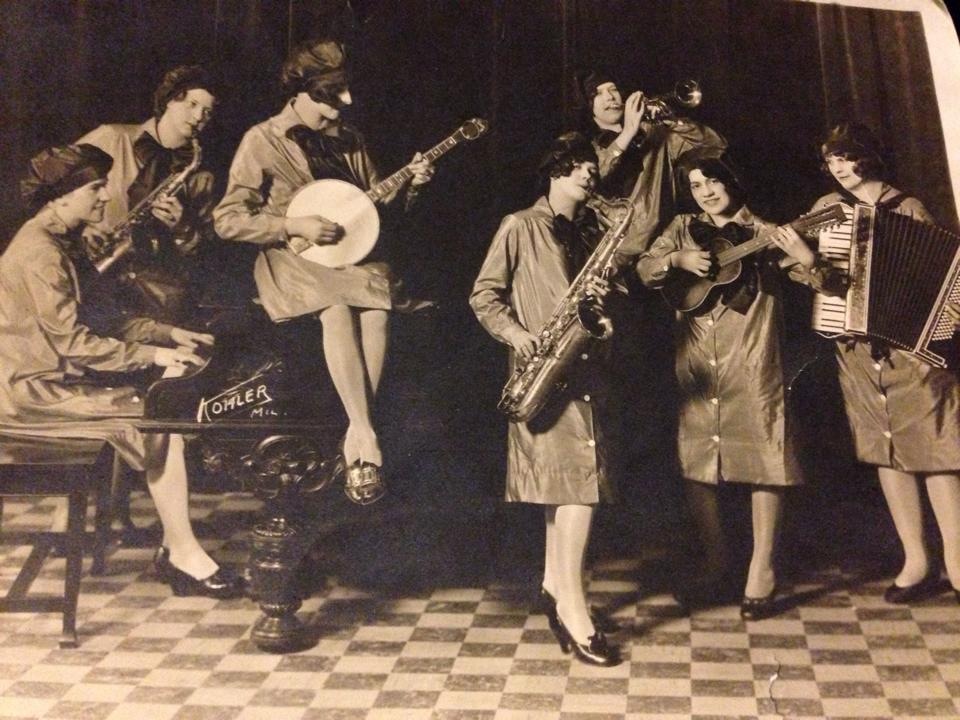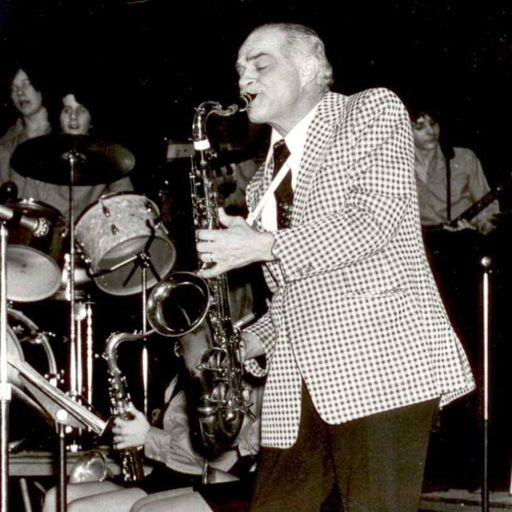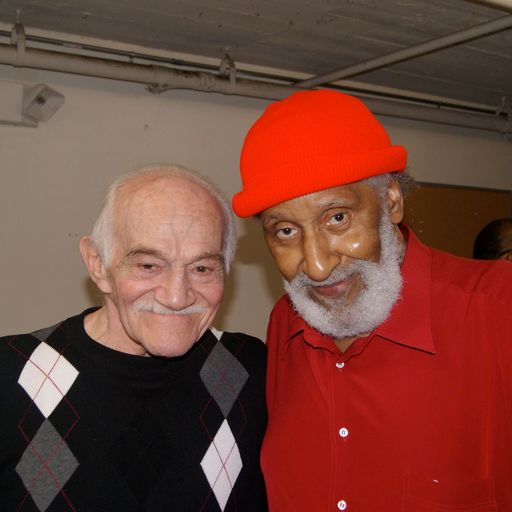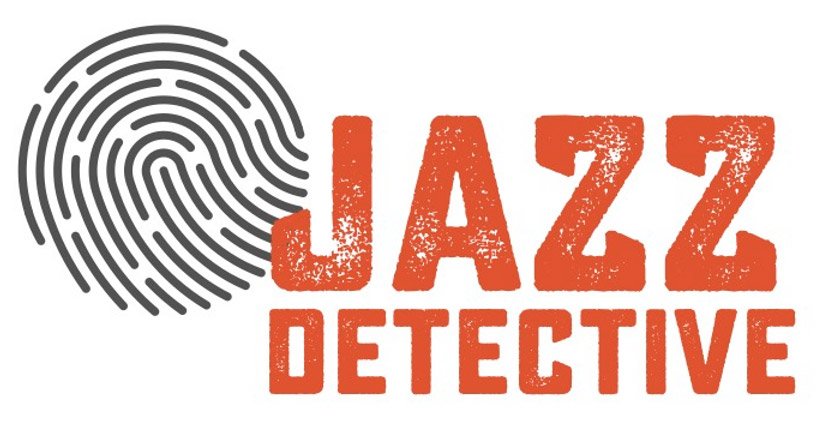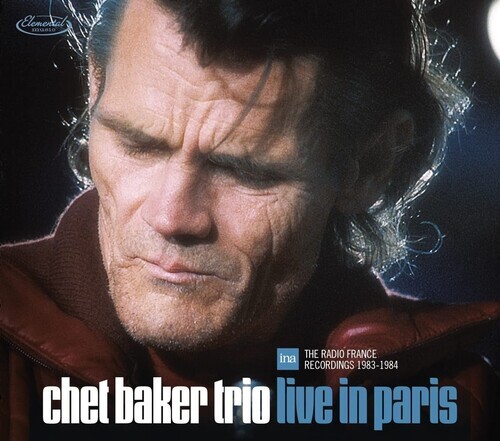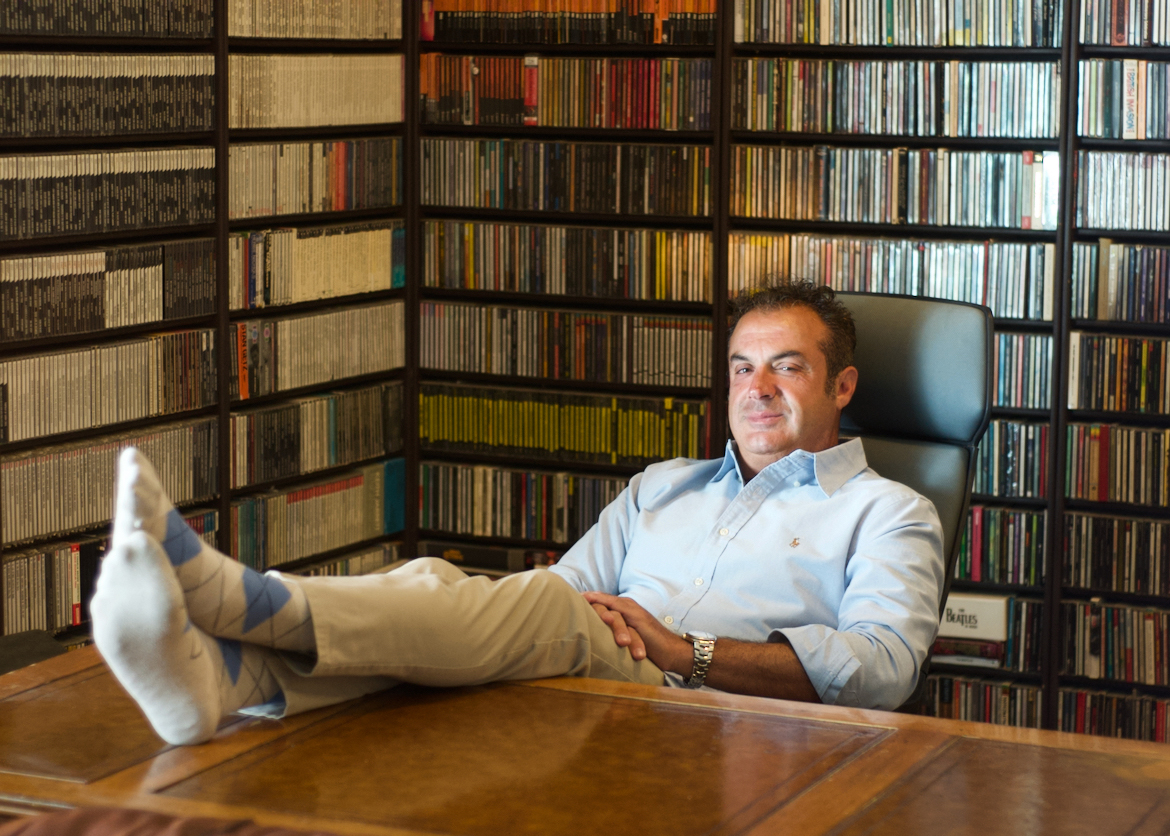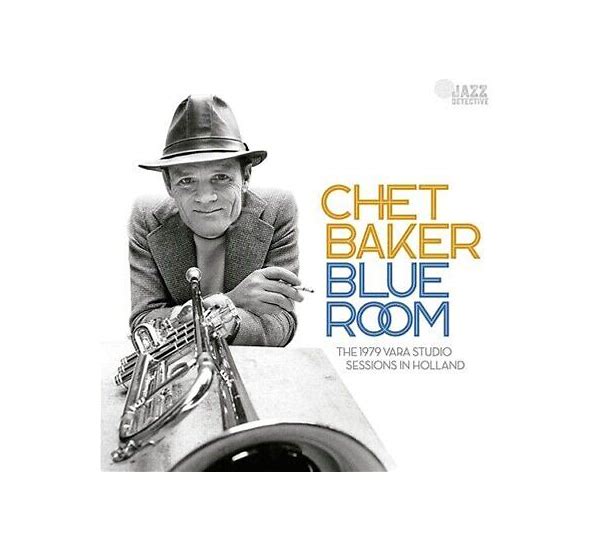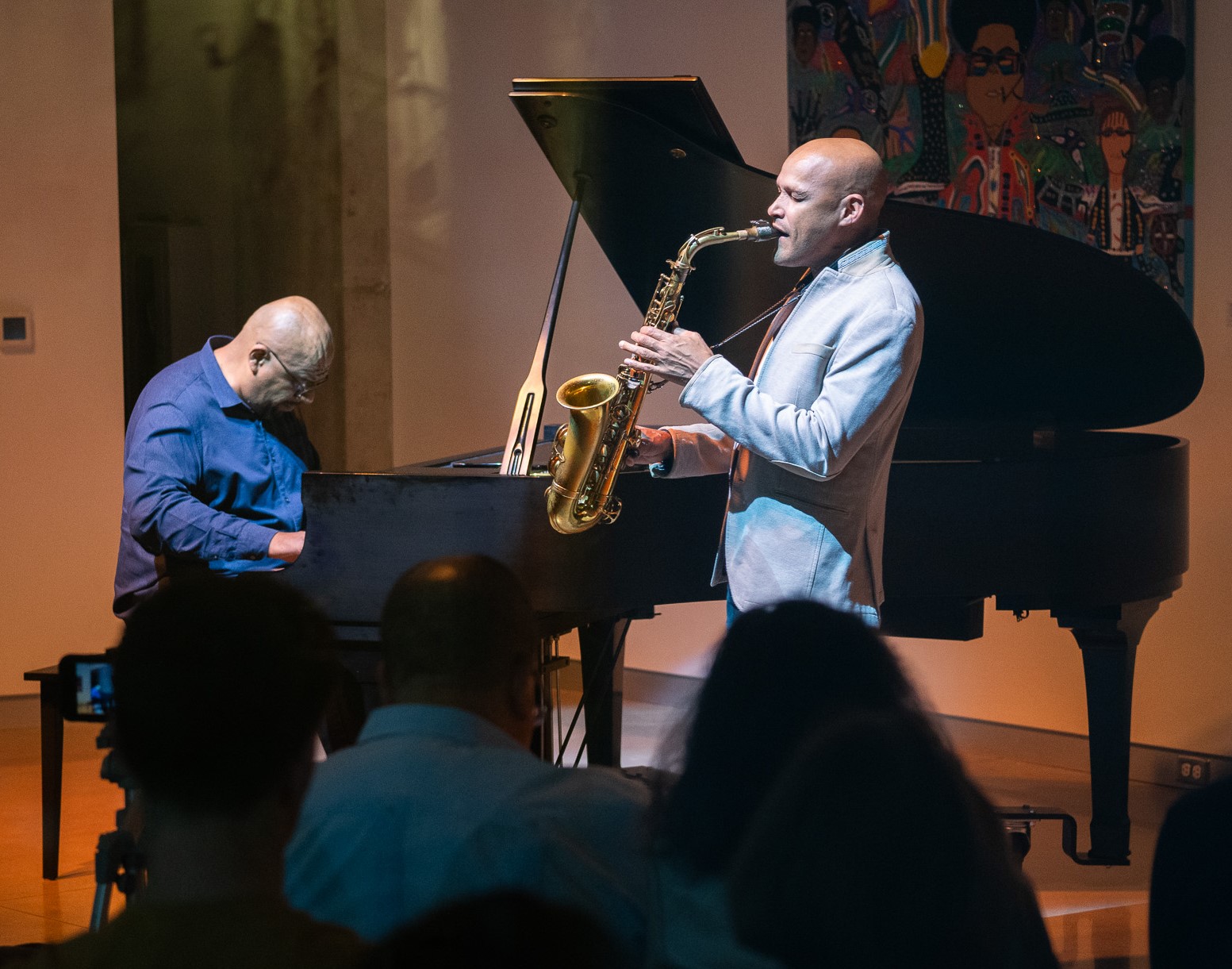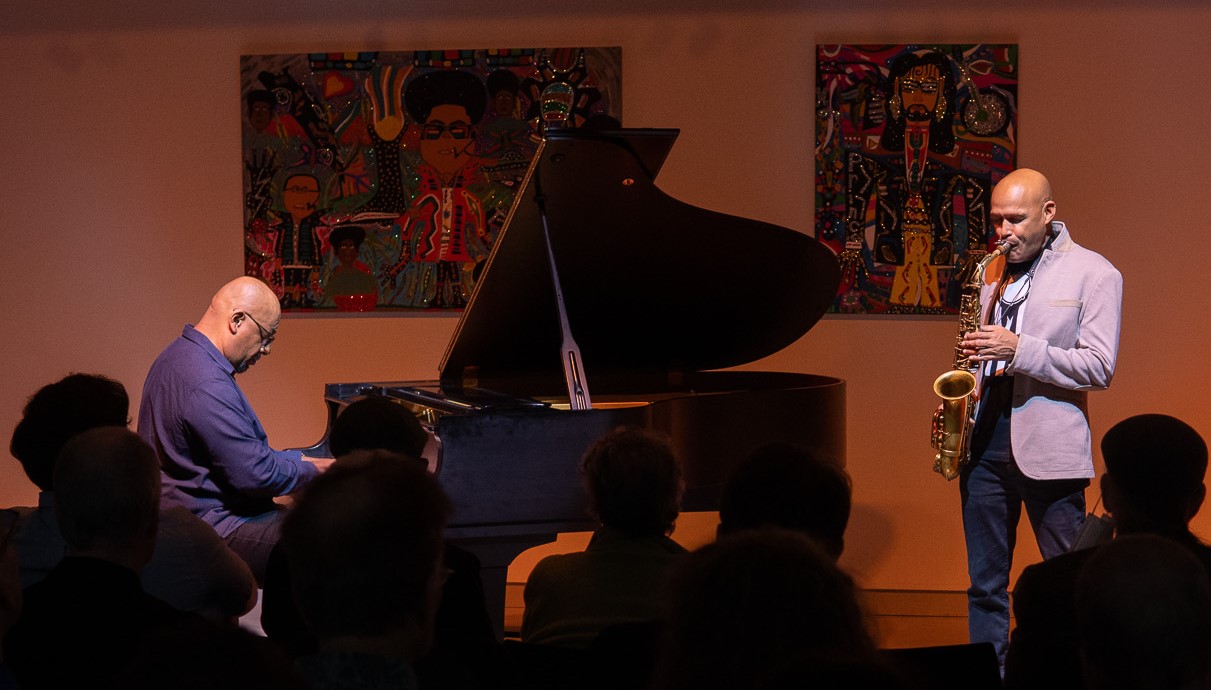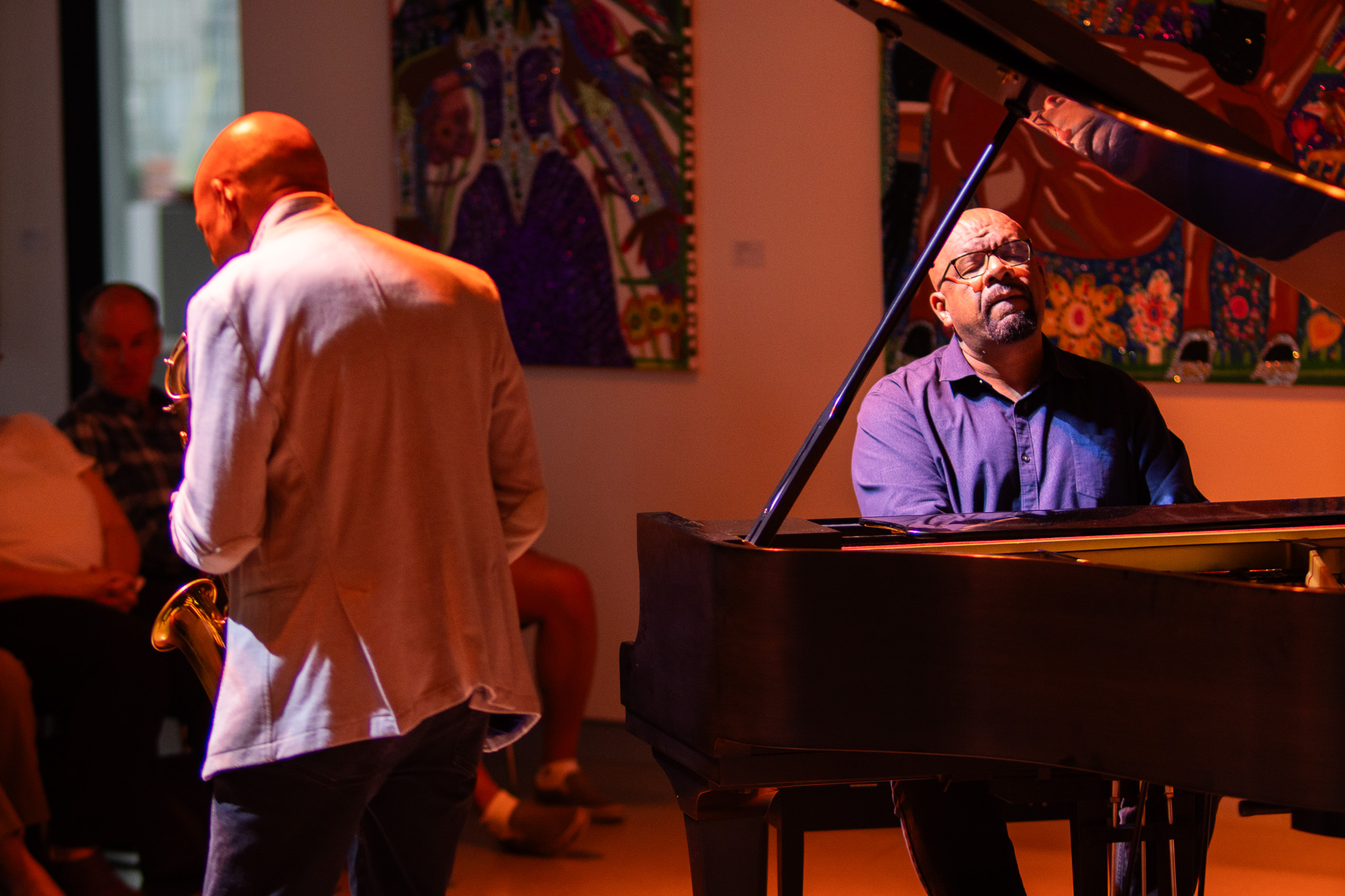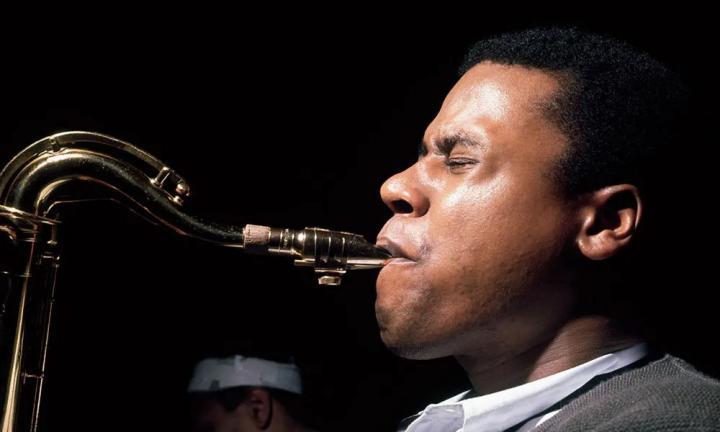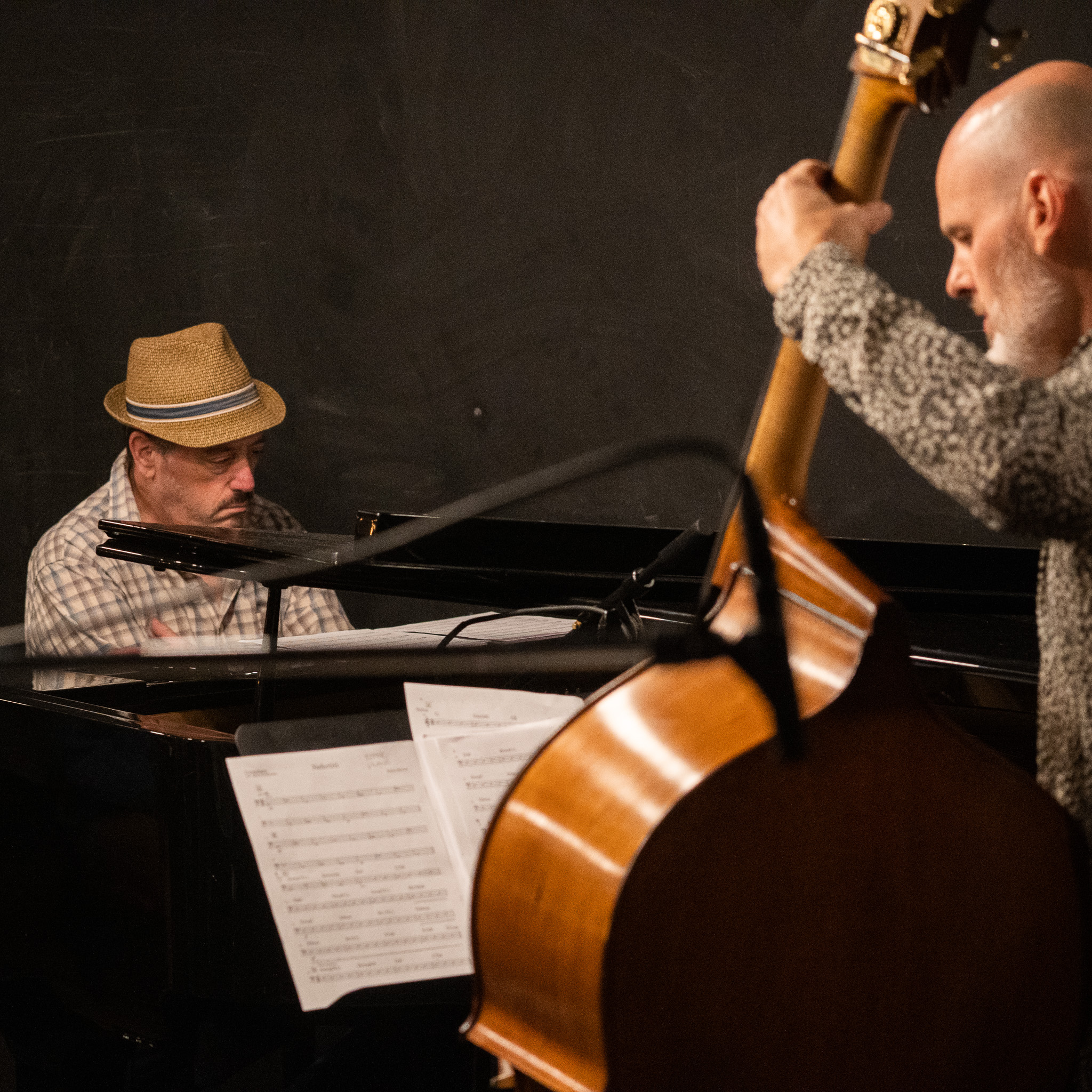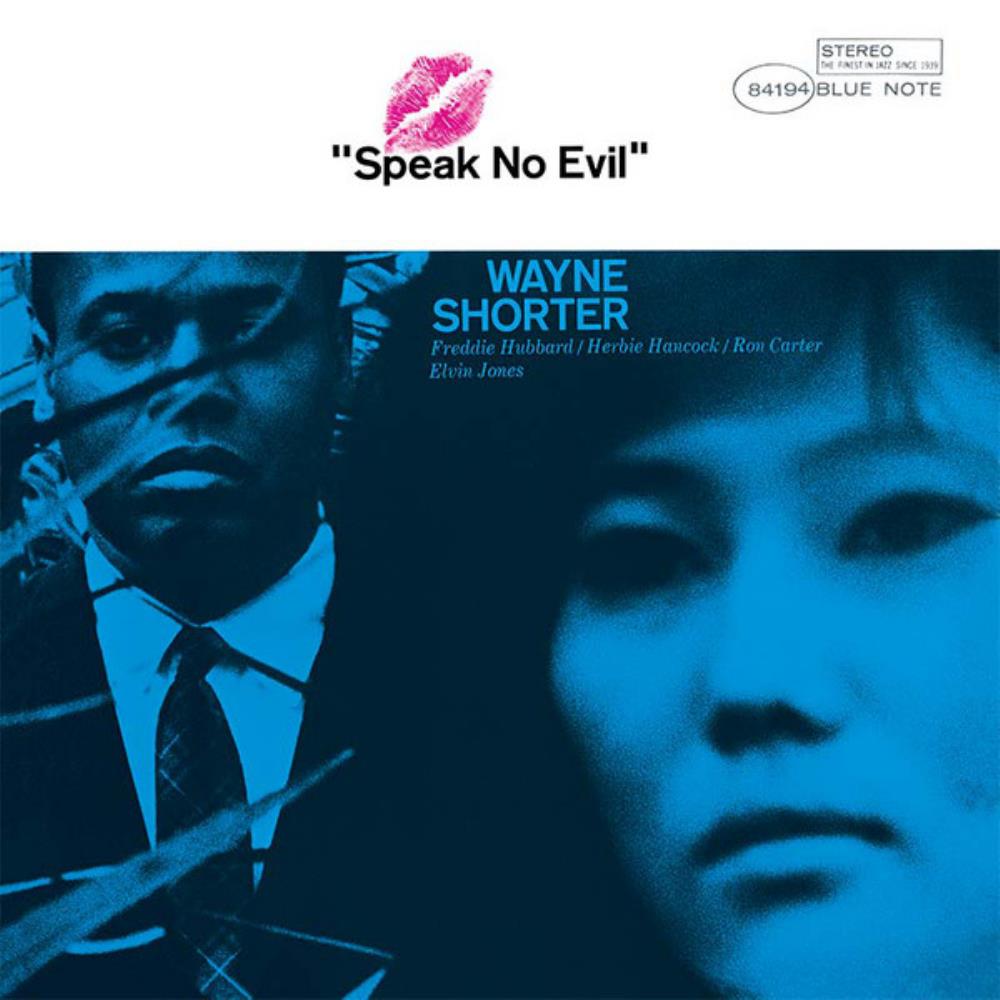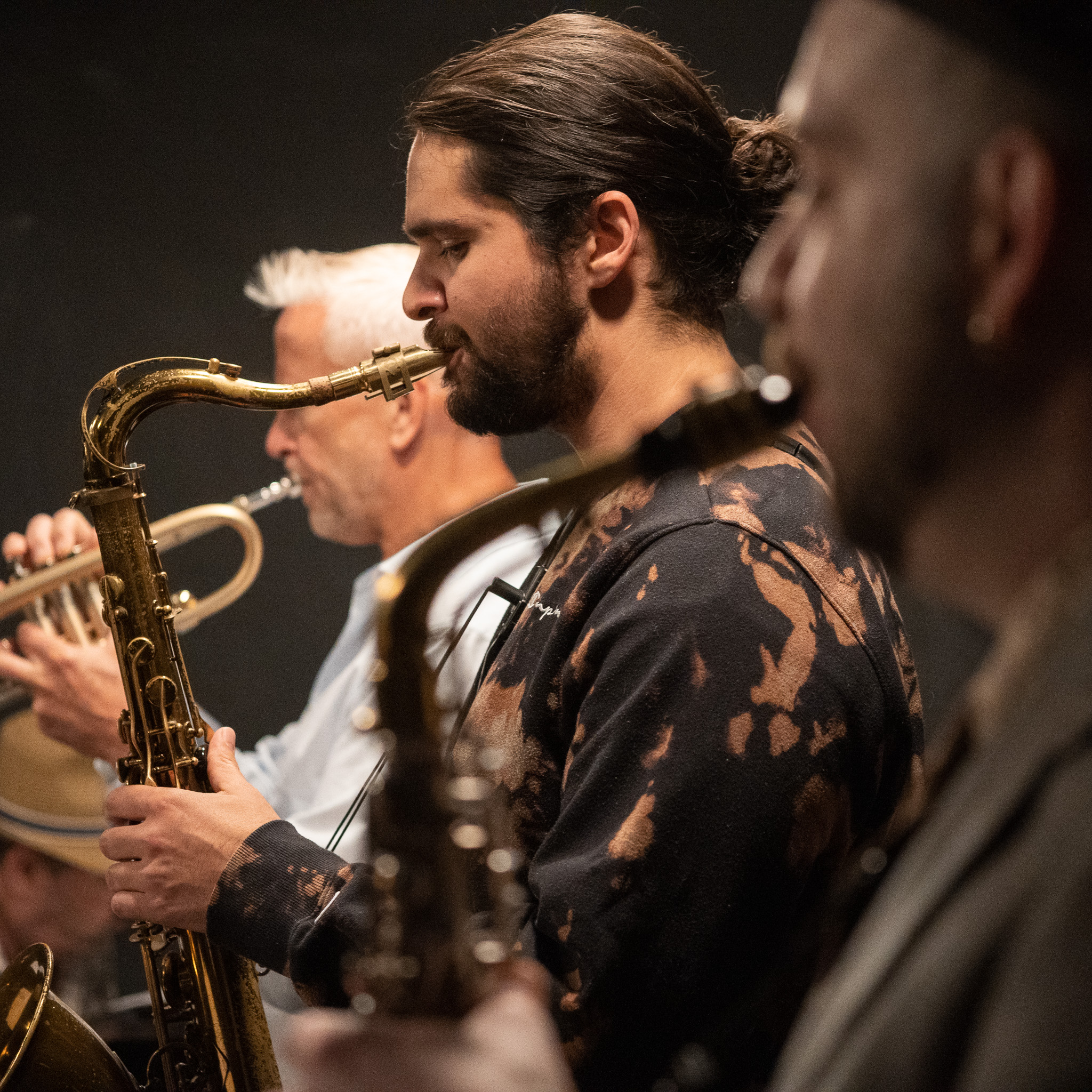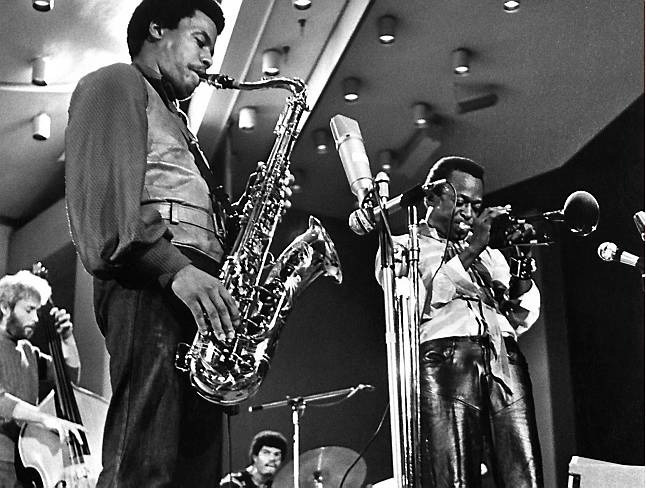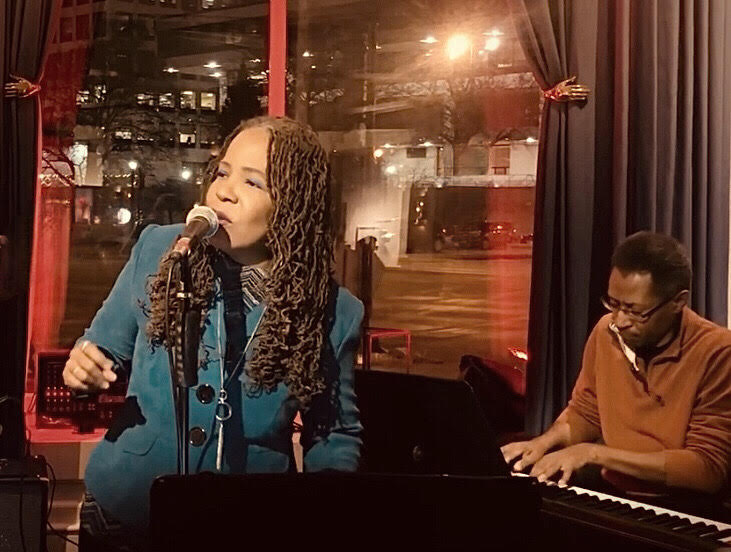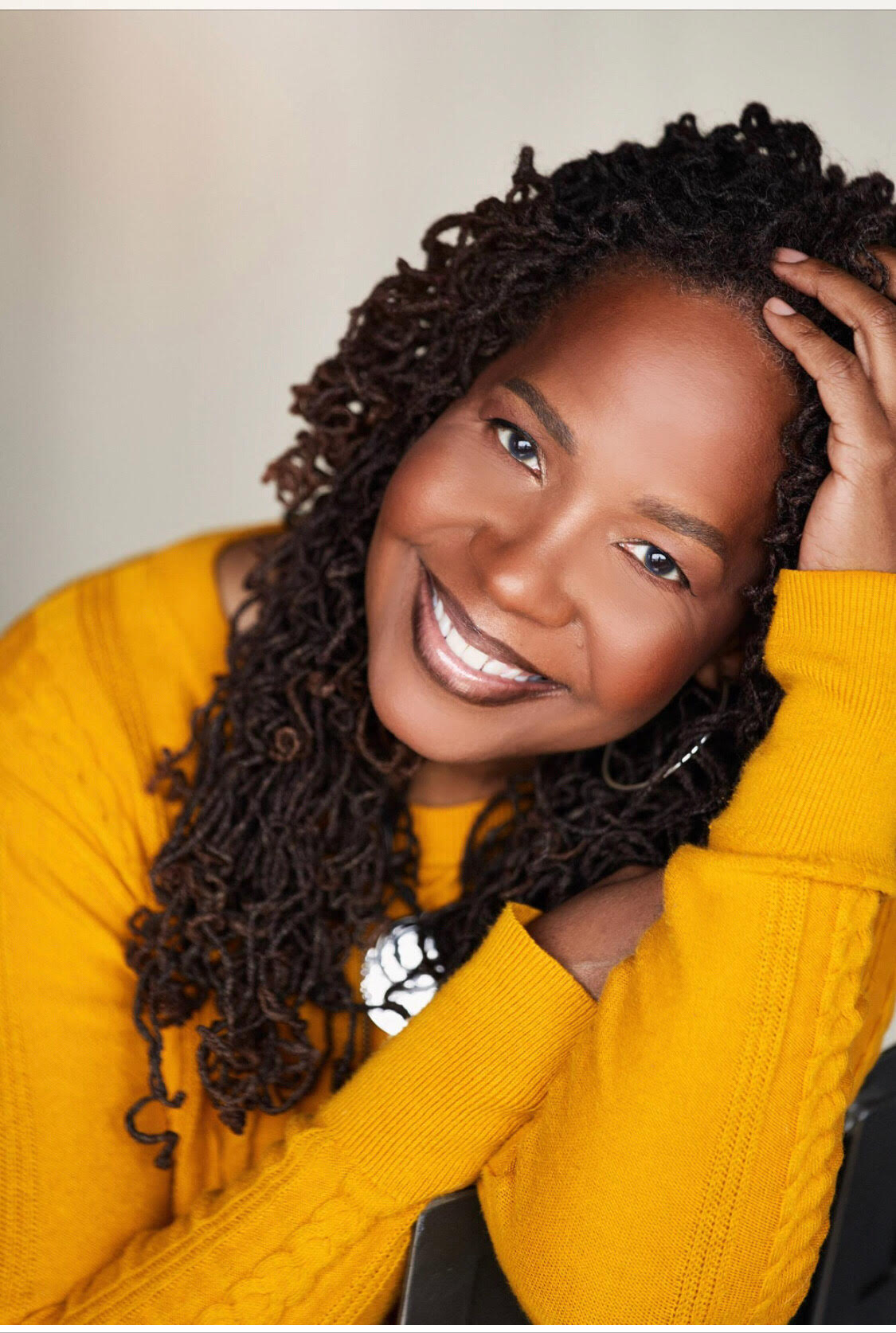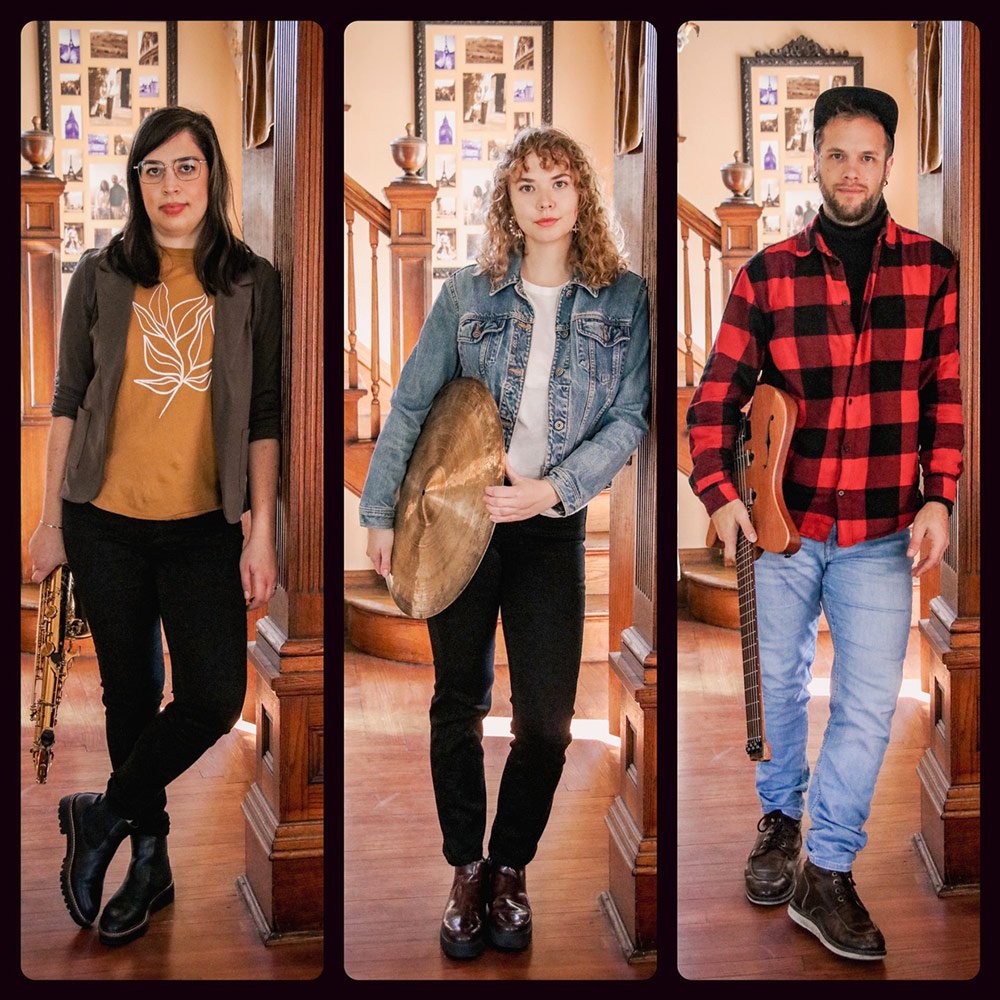
(L-R) Saxophonist Jeanne Marie Farinelli, drummer Hannah Jonson and guitarist-composer Ben Dameron are the core members of Heirloom.
Heirloom will perform at 8 p.m. Friday, Sept. 15 at Bar Centro, 804 E. Center Street, Milwaukee. For information: https://centrocaferiverwest.com/bar-centro/
One of the brightest and most auspicious recent manifestations of the Milwaukee jazz scene is a band called Heirloom. Their name seems well considered, as one senses how two distinctive talents, a man and a woman, have begat at jazz group with a firm sense of modern jazz tradition—the valuable object, in effect—and the skill and imaginative vision for how to cultivate their sense of it in beautiful and stimulating form.
The group is the byproduct of the confluence of guitarist-composer Ben Dameron and drummer Hannah Johnson, both rather unique musicians who add up to something greater than their parts. Dameron has developed into an electric jazz guitarist of distinct authority after becoming an accomplished classical guitarist. But the jazz bug bit him at some point and the first time I saw him perform was playing jazz solo on his classical guitar, at a house concert he shared with singer-pianist Anthony Deutsch a few years ago.
I first saw the couple sit in for one Thelonious Monk tune at Bar Centro in Milwaukee a few months ago. This one tune signaled the couple’s ease with the jazz tradition. Dameron was fleet and harmonically astute, as excellent as I anticipated on electric guitar. Johnson was an immediate revelation on this tune. I’d heard of her leading her own jazz group and good things about her. But she stunned me with her effortless mastery of modern jazz swing, in the propulsive style that makes the music a stimulating, sparkling conversation. Frankly, Johnson outplayed the drummer in the band she briefly sat in with and, I dare say, after seeing her now twice with Heirloom, she’s as good a jazz drummer as any in the region. I think of one who’s comparable with straight-ahead, yet more versatile, but damn, she swings like a windblown willow tree.
Feeling the Music
She flips out rimshots, tom-tom thumps, triplets, and paradiddles with the accenting flair of a master linguist. The language is jazz but you feel it sooner than you comprehend it, which is the way it should play. 1
Out front is tenor saxophonist Jeanne Marie Farinelli, another superb player. I heard a pensive, lyrical quality in her tone which reminds me of Wayne Shorter, as does her resourceful use of her horn’s full range, with occasional bottom notes for powerful punctuation.
The band opened the set with Miles Davis’s “Nardis” which resembles a Shorter piece in its epigrammatic spaciousness, so I momentarily mistook it for a Shorter tune even though I’ve played it many times on piano and it was actually made famous by pianist Bill Evans. That seamless stylistic commingling, intentional or not, seems one nominal quality of Heirloom’s style.
Similarly, their rendition of Thelonious Monk’s “Let’s Cool One” blended sensibilities: graced with lyricism like a garland of smoke curving around a line that typically rises like a cubist sculpture.
Although Johnson handled band introductions and naming the tunes, Dameron seems to be the conceptual leader. He typically polished the thematic statements to a gleaming sheen by harmonizing his guitar tightly with Farinelli’s sax. That, and his frequent use of a “chorus” pedal, recalled the “bright sized life” of Pat Metheny’s popular quartet.
Impressive originals
Plus, he filled out the two sets with his ambitious, impressive originals. The first one, “Messages from the Deep” was a drink of water you might drown in if your mind can’t swim. When I asked him if it was 64 bars through-composed, he just laughed and said “Yes, it’s pretty long. That came out of me one day when I was really feeling something deep way down inside.”
He explained that he’s a fan of sci-fi, like Dune (another Dameron tune, “Spice Trance,” specifically honors a scene in that book), and enjoys writing with a feel for metaphysical atmosphere, though his tunes are far more substantial than, say, typical New Age music, which often trivializes science fiction and metaphysical sensibilities.
Watching Dameron is revealing and sometimes amusing. He spent most of the gig with his right foot on the “chorus” pedal (though not overdoing the device), but the posture seems ingrained—classical guitarists always use a right-foot stand, which the pedal resembles. Then, while soloing in fast grooves, his left foot swung back and forth like a slightly overwound clock pendulum.
The current bassist is John Christensen, the band’s elder statesman, who lends vibrance, musicality and gravitas to any band. Plus, he’s the living pulse, a crucial quality.
By contrast was a guest pianist. Heirloom has worked as a quartet, which they did when I heard them play a few weeks earlier, at the Brady Street Festival. And outdoors, they cranked the volume and sounded like a great fusion band. At Bar Centro, dynamics and the repertoire were more tempered.
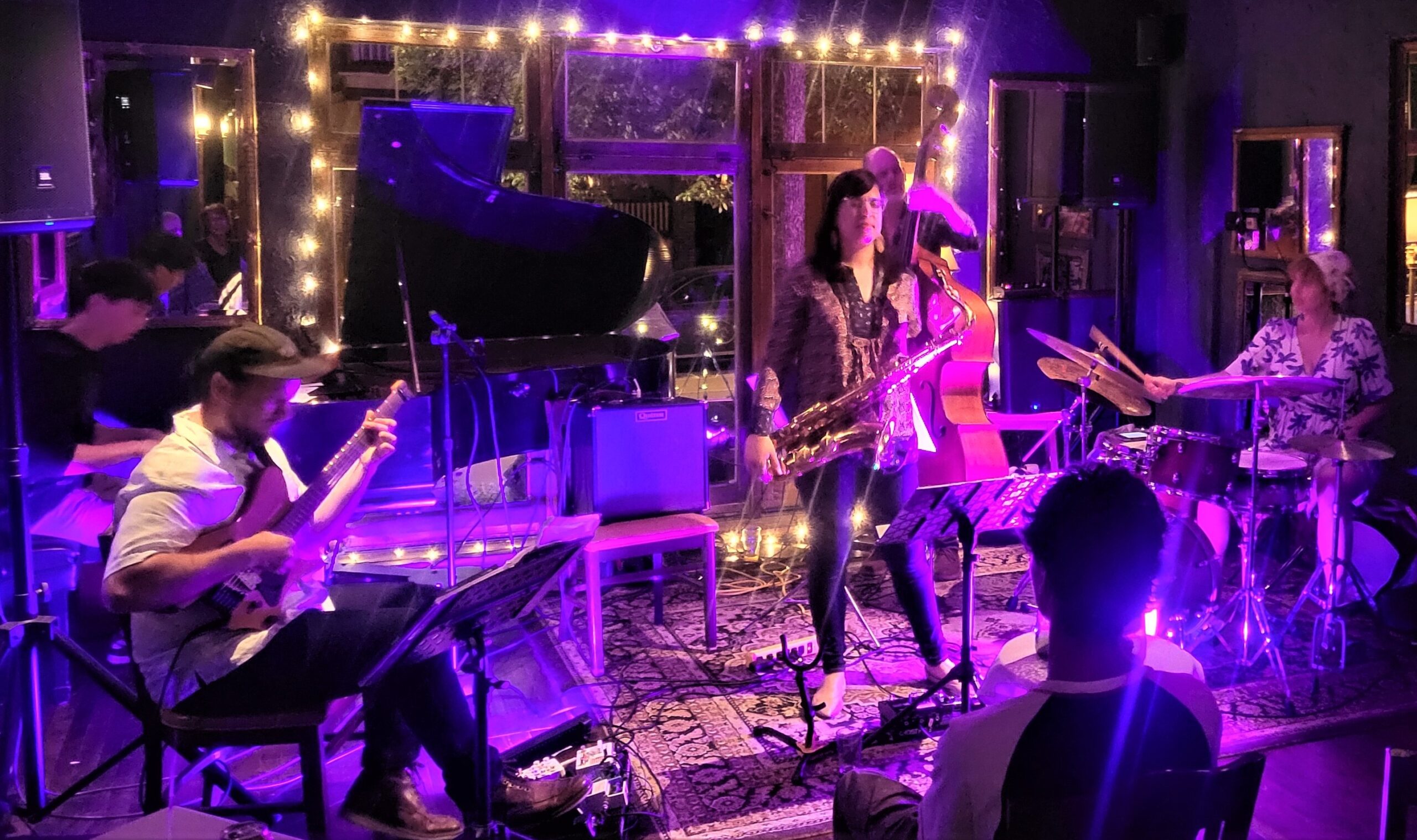
Heirloom as a quintet at Bar Centro recently, with pianist Lucas LeBeau (far left) and bassist John Christensen background).
But Dameron had described the pianist sitting in as “a 17-year-old wunderkind.” Check that box. Slender, dark-haired Lucas LeBeau might resemble a young Jackson Browne, but even more boyish. Yet he has the extraordinary facility of someone deeply trained, if not innately gifted.
LeBeau seemed to ride the sustain pedal a bit much, perhaps striving to approximate the leader’s spiritual atmospherics. But he sounds like a keeper and Dameron hopes he remains one.
The guitarist is an imaginative thinker. But make no mistake, this is a serious but buoyant band. Both leaders, especially Johnson, brim with joy as the group percolates, and you hear their smiles in the music.
This band is a vine-fresh, living heirloom of jazz, something I’d buy as readily as anything in an antique shop, because you always feel their bass pulse and musical arteries, not just redolence of past glory.
Yet, like the most timeless jazz, Heirloom’s improvs reveal the mining and molding of artistic thought in real time.
___________


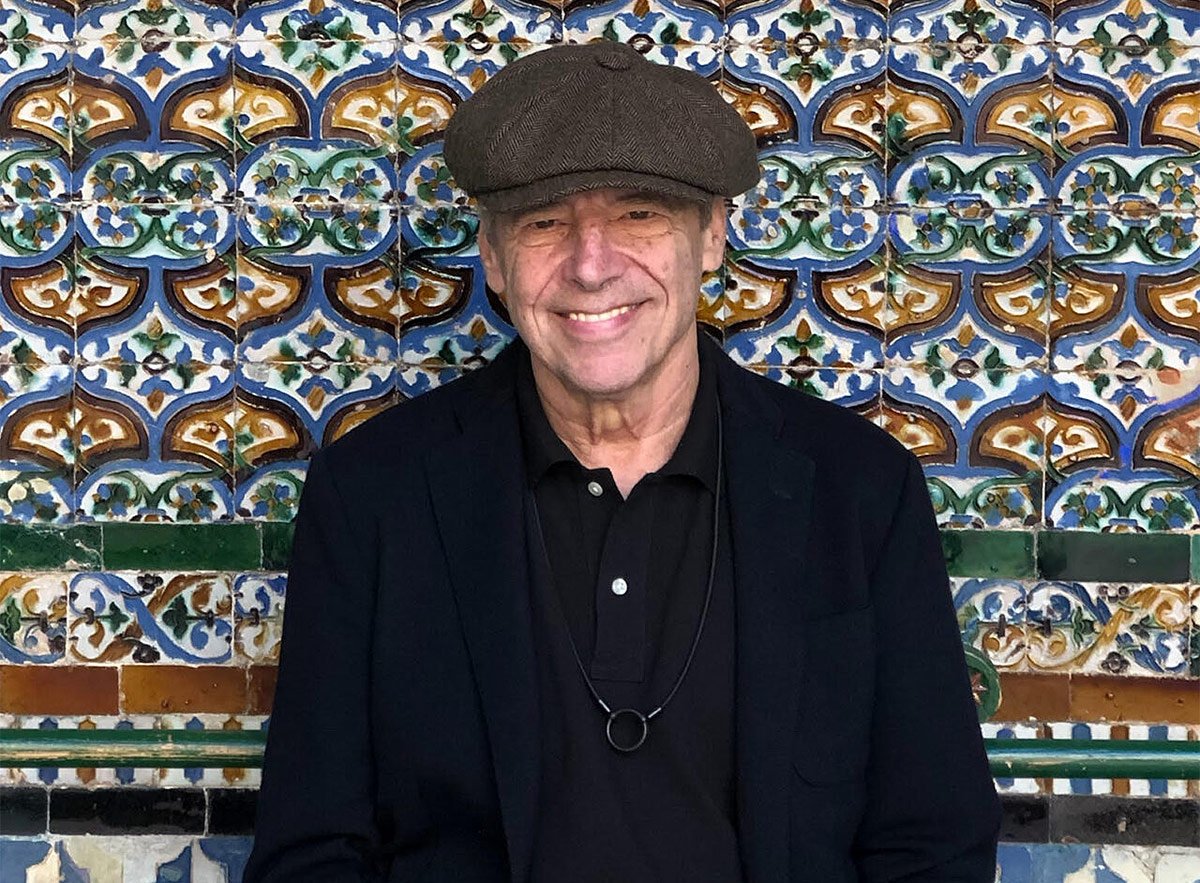 Ben Sidran. All photos via BenSidran/bensidran.com, unless otherwise credited.
Ben Sidran. All photos via BenSidran/bensidran.com, unless otherwise credited.

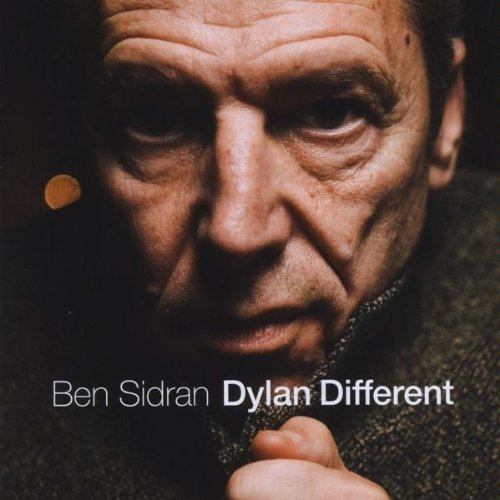
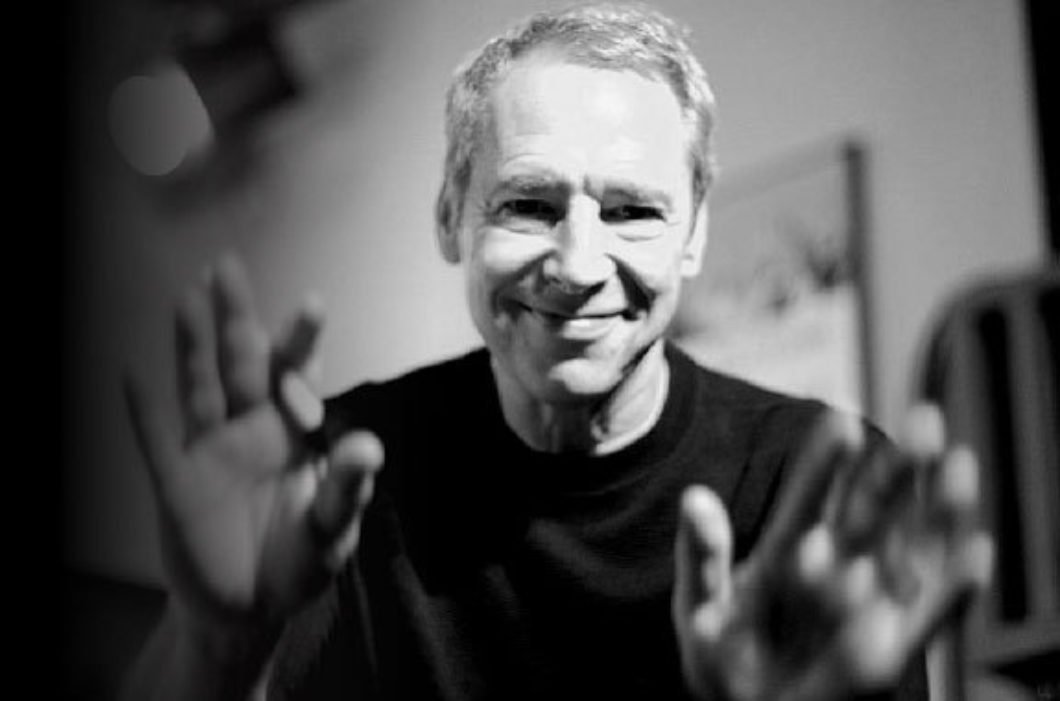

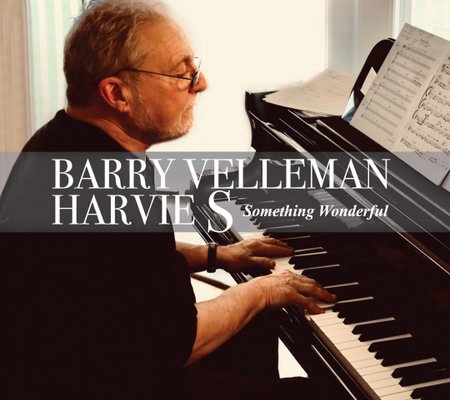 Album review: Barry Velleman/Harvie S. — Something Wonderful (RVS Records)
Album review: Barry Velleman/Harvie S. — Something Wonderful (RVS Records)